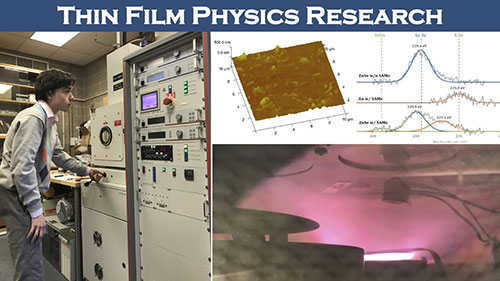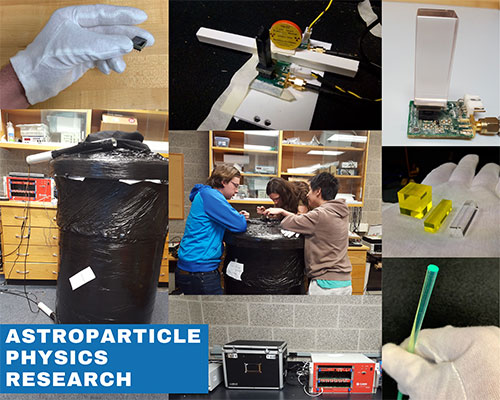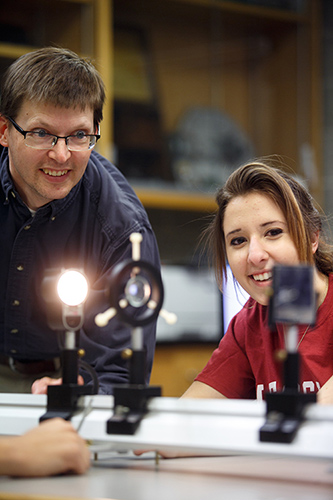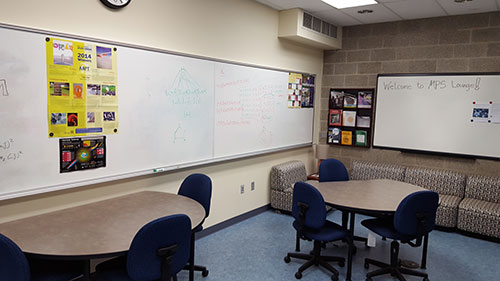
Solid State Physics Research Lab
In this laboratory, Dr. Hellgren, utilizes a high-vacuum (base pressure 110-8Torr, the lowest pressure on campus!) physical vapor deposition (PVD) system to sputter-deposit thin films of metals, nitrides, borides and ceramic materials.
Here, we can analyze the materials we manufacture using atomic force microscopy (AFM – measures surface roughness), nanoindentation (measures hardness and elastic properties), and 4-point probe (measures electric resistivity). We also have access additional to analysis equipment such as X-ray diffraction (XRD), and scanning electron microscopy (SEM) through our friends in the Chemistry and Biology departments.
To learn more about vacuum science, plasma physics and thin film deposition, contact Dr. Hellgren.

Astroparticle Physics Research Lab
Astroparticle physics uses particle physics techniques to understand our Universe. Of paramount importance is understanding the nature of high energy cosmic and gamma rays, dark matter and dark energy. In this lab we have been focusing on detector techniques for high energy cosmic and gamma rays in space and ground as well as dark matter detectors. We use new technologies to develop prototype detectors which can be adapted by large scientific experiments for future searches. Strong students are encouraged to join in working on astroparticle physics projects. Students acquire experience in theoretical foundations of astroparticle physics, hands-on experience with detectors and their assembly, characterization of detectors, data acquisition systems, data science, and programming skills in languages such as Python, C++ and Matlab. Outstanding students’ work can lead to publications in physics journals in this area of physics. To find out more, contact Dr. Kryemadhi.

Biomedical Optics Research Lab
This lab houses dynamic light scattering, fluorescence correlation, and other laser-spectroscopy systems. These tools are used for a variety of biophysical and soft-condensed matter applications, such as identifying protein aggregates, measuring concentrations of viruses, and observing microphase transitions. The lab also houses a laser sheet imaging system for micro- and mesoscopic imaging. Students will gain hands-on experience performing sample preparation, applying data analysis methods, writing code, and designing and constructing optical systems. To find out more, contact Dr. Farrar.

Physics Teaching Labs
(Frey 350 and 352)
All physics labs are taught in this lab space, from classical mechanics labs to advanced modern physics labs. We use modern equipment such as digital oscilloscopes, Vernier sensors and LoggerPro software, allowing for precision measurements and rapid in-lab data analysis. This allows for accurate experimental results and more time for student-instructor interaction about the core physics concepts we are teaching. Both labs have 12 lab stations with room for 24 students.

CMP Lounge
This space is exclusively for students and has comfortable seating, a projector, and white boards all around. Just down the hall from faculty offices, this is an ideal space to work on homework while popping into faculty office hours, collaborate with a friend, or receive course-specific tutoring in the evenings.